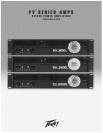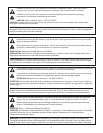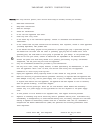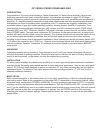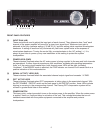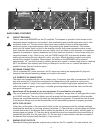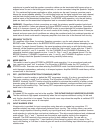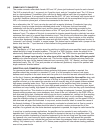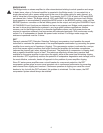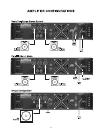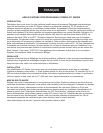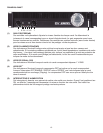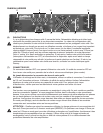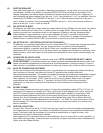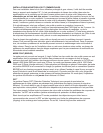
9
BRIDGE MODE
The Bridge mode on stereo amplifiers is often misunderstood relating to actual operation and usage.
In basic terms, when a 2-channel amplifier is operated in the Bridge mode, it is converted into a
single-channel unit with a power rating equal to the sum of the power rating for each channel, at a
load of twice that of the single-channel rating. For example, the PV 1500 is rated at 500 watts RMS
per channel into 4 ohms. The Bridge rating is 1000 watts RMS into 8 ohms (minimum load). Bridge
mode operation is accomplished by placing the MODE switch in the BRIDGE position, using only the
BRIDGE Speakon
®
connector or the red binding posts for the output, and using the CHANNEL A input.
All CHANNEL B input functions are defeated and serve no purpose now. Bridge mode operation can
be used to drive sound distribution systems in very large public address applications. Another
common use for the Bridge mode is in subwoofer applications where very high power levels are
required to reproduce extremely low frequencies with adequate headroom. Such enclosures usually
contain 2 or 4 loudspeakers to handle the power levels involved. For Bridge mode usage, the
enclosure impedance must be 8 ohms.
DDT
™
Peavey’s patented DDT (Distortion Detection Technique) compression circuit enables the sound
technician to maximize the performance of the amplifier/speaker combination by preventing the power
amplifier from running out of headroom (clipping). This compression system is activated by a unique
circuit that senses signal conditions that might overload the amplifier and activates compression
(reduces the channel gain) when clipping is imminent. The threshold of compression is clipping itself,
and no specific threshold control is used. This technique effectively utilizes every precious watt
available for the power amplifier to reproduce the signal, while at the same time minimizing clipping
and distortion. DDT significantly reduces the potential of loudspeaker degradation and damage, and is
the most effective, automatic, hands-off approach to the problem of power amplifier clipping.
Since PV series power amplifiers use a circuit breaker for overcurrent protection, the DDT
compression system plays an even more important role in continuous performance by preventing
each channel from clipping and overload. Continuous operation at clipping can cause the circuit
breaker to trip, but with the DDT activated, this problem is minimized. For this reason, the DDT
compression system should always be enabled.



